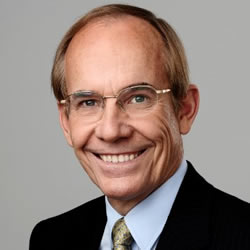When I was in my teens, Kevin, my brother-in-law, explained how stainless steel was invented. Like many of the world’s most useful products, it wasn’t so much invented as stumbled upon in a happy accident – while its inventor was looking for something else.
Happy accidents are indispensable to the progress of human innovation. They’ve changed the way we live, not to mention the strategic direction of many organizations. The ability to recognize and capitalize on happy accidents is one of the hallmarks of truly epoch-defining enterprises and a major driver of technological advancement.
But is your organization set up to identify and capitalize on a happy accident, should it occur? The unhappy truth is that most companies are simply not capable of recognizing a happy accident – big or small. They’re too focused on narrow problem-solving and short-term returns.
Here I look at three historic accidental inventions – stainless steel, Superglue, and the microwave oven – and how these ground-breaking, but unexpected, innovations found their way into the world. I challenge you to examine your organization’s culture and practices to note any shortcomings which must be addressed to produce genuine breakthrough innovation.
Your Culture Needs to Be Broadly Innovative
In 1912 Harry Brearly, a British metallurgist and lead researcher at Brown Firth Laboratories, was trying to improve the strength of gun barrels that wore out too quickly. So, he experimented with different mixtures of iron and other metals and in 1913 accidentally found that a certain combination of iron, chromium, and carbon stopped the gun barrels from corroding.
One version of the story is that Brearly tossed his used experimental steel barrels onto a pile of rubbish, and later noticed they hadn’t rusted like the others. The pursuit of an erosion-resistant steel ended with a corrosion-resistant one.
But the management of Brown Firth didn’t see the alloy’s potential. Their sights were narrowly fixed on the idea of inventing a product that wouldn’t wear out.
Harry Brearly wasn’t so blinkered. With an open mind on the potential of what he’d discovered, Brearly took his discovery to his old school friend, Ernest Stuart. Stuart worked in a different company – he was Cutlery Manager at R.F. Mosley’s Portland Works. After testing the material in a vinegar solution without any residual stains, Stuart named the new alloy “stainless steel.”
Your Culture Needs to Be Inquiring
Who hasn’t heard of Super Glue? Another success that occurred via another happy accident.
Cyanoacrylate, to use Super Glue’s chemical name, was discovered by Dr. Harry Coover while he was experimenting with producing crystal-clear plastic gun sights for Allied soldiers in WWII. One formula he devised failed for gun sights, though it resulted in a quick-bonding agent. However, Coover was looking for a clear gun sight, not an adhesive, so the product was abandoned.
The natural question we ask at these times is: what went wrong here? But this angle of inquiry only considers the failure to reach the original objective. Coover had failed to produce a gun sight, yet his discovery would prove incredibly valuable in a the right context.
The sticky substance was set aside until 1951, when Coover was working for Eastman Kodak. Coover’s colleague, Fred Joyner, tried cyanoacrylate between a pair of refractometer prisms – they stuck solidly together. Kodak released the product as Eastman#910 in 1958, later renaming it Super Glue.
Your Culture Needs to Be Persistent
What did we do before the advent of the microwave oven? Great for defrosting food, reheating leftovers and, in my case, perfect for reheating half-drunk cups of tea or coffee.
The product was invented by accident in 1946 by a self-taught engineer, Rod Spencer, who was working for the Raytheon Manufacturing Company. Spencer was testing his magnetron invention. During the experiment, he put his hand in his pocket and found that the peanut cluster bar he was saving for lunch had melted. “It was a gooey, sticky mess,” Spencer said. Curious, he tried the same test with an egg – it exploded.
But the microwave oven wasn’t commercialized until eight years later, when a fridge-sized version called the “Radarange” was tested on the market. It weighed nearly 750 pounds and came with a price tag of more than $US2,000. (About A$25,000 in today’s money.) Unsurprisingly, it flopped.
Yet it was clear they were onto something because competitors began entering the fray with smaller models. Raytheon redoubled its efforts, working on cheaper, benchtop models but it wasn’t until they added electronic controls in 1986 that the microwave really took off, 40 years after Spencer’s initial “sticky mess.” Today, approximately 90 percent of households in the US own a microwave. It took four decades to find the right form for the initial idea, but once that happened, the product became ubiquitous.
Your Organization and Innovation
I’ve drawn on these historic examples from a large list of innovations that includes insulin, penicillin, X-rays, radioactivity, and the pacemaker to make the point that it takes a certain culture to capitalize on happy accidents – to turn them into grand innovations.
So, in addressing this issue you might ask yourself these four questions. Is my organization structured in such a way as to recognize and exploit a happy accident? Have we restricted our scope to incremental rather than disruptive innovation? Is our culture so risk averse that we wouldn’t even recognize a happy accident? If we did recognize one, would we have the courage and capability to take it forward?
If your answer to any of these questions doesn’t point you in the right direction, then I suggest it’s time for change.

